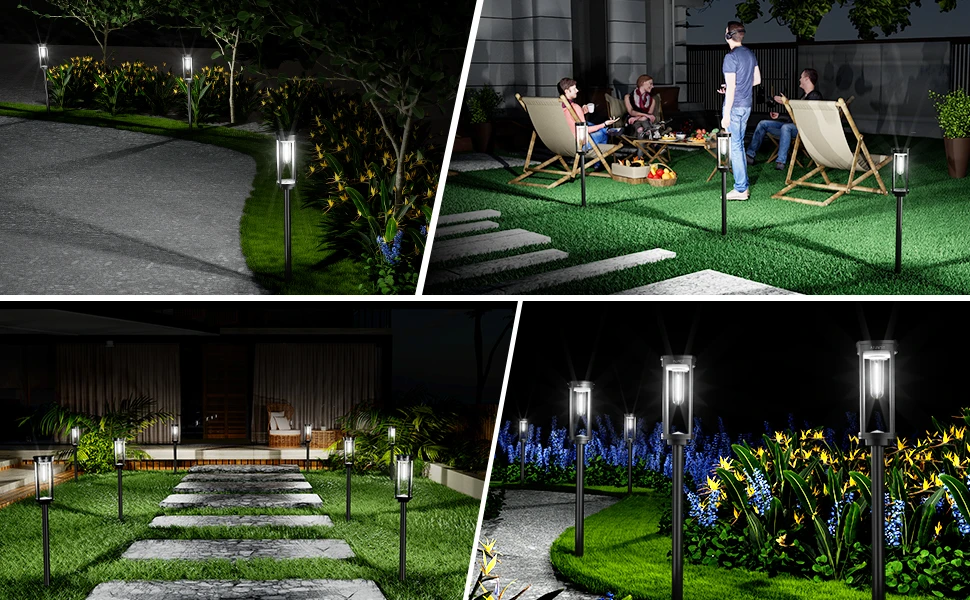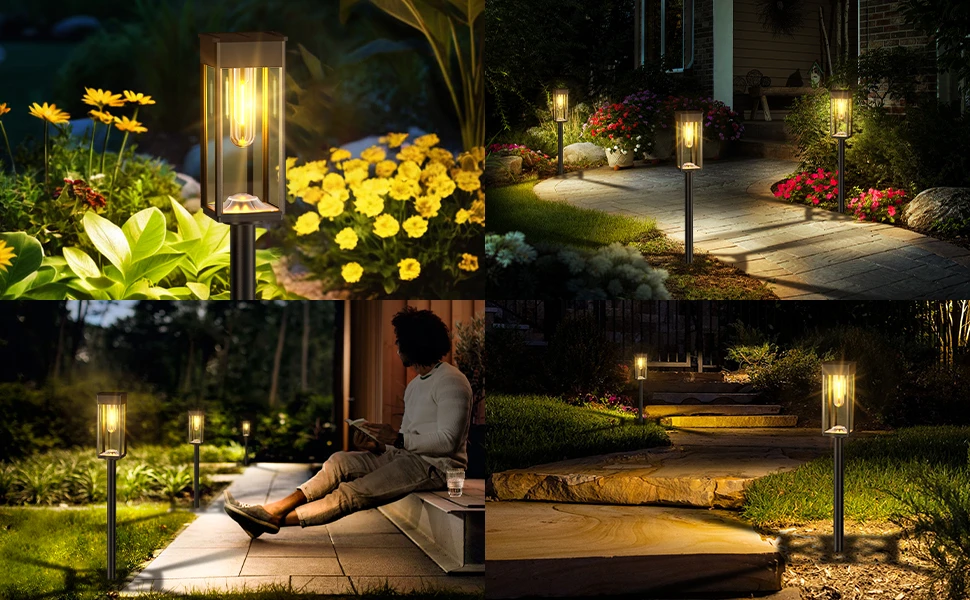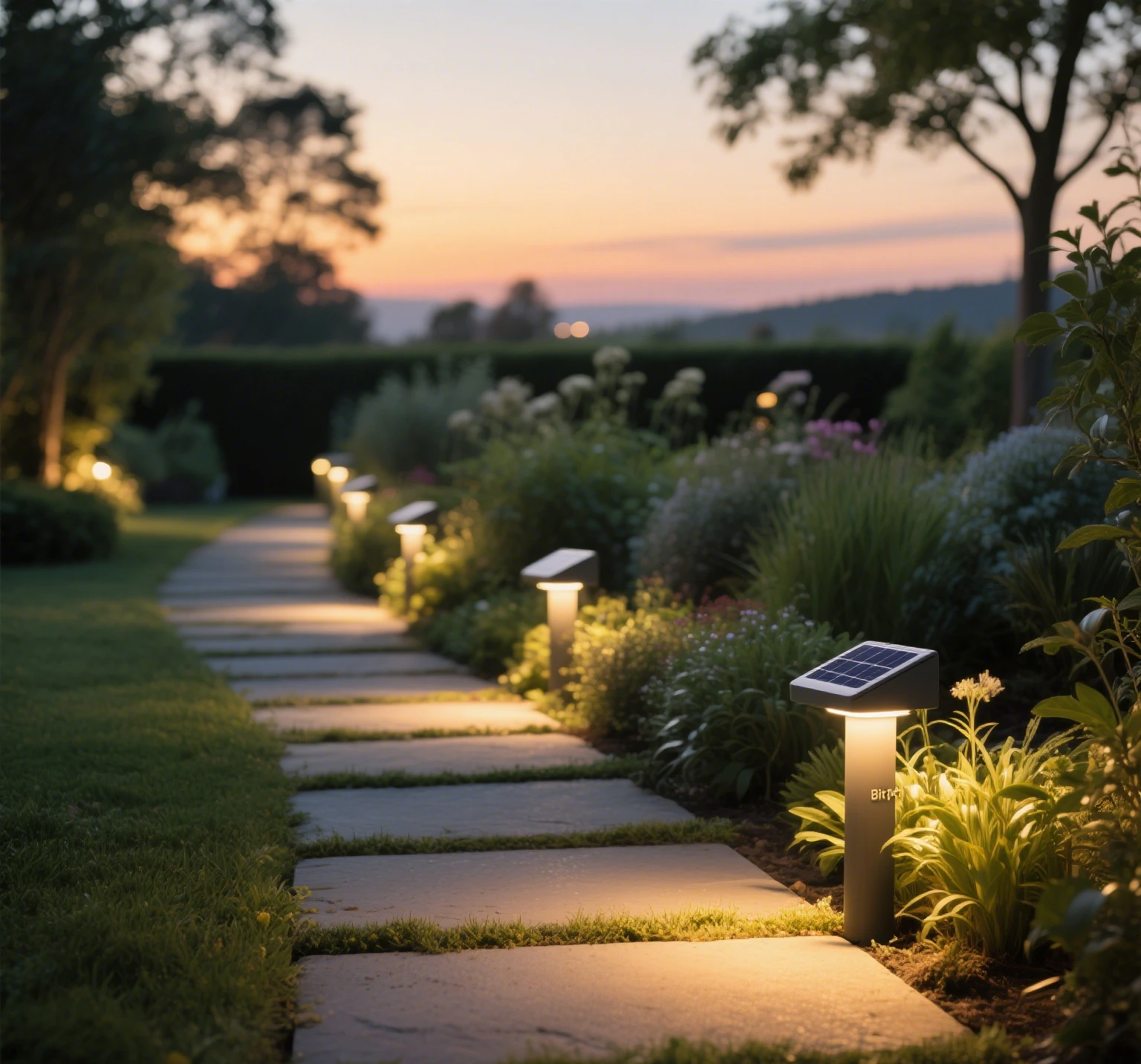Ever noticed your succulents stretching awkwardly or your basil looking droopy after a string of rainy days? Cloudy weather can starve your backyard plants of sunlight, leading to leggy growth, fewer flowers, or weak herbs. For North American gardening enthusiasts, this is a common headache, especially in regions with unpredictable weather. But what if you could give your plants a sunlight boost without plugging into an outlet? Yard plant solar grow lights are the answer, offering an eco-friendly, budget-friendly way to keep your succulents, herbs, and seedlings thriving year-round. This guide is for home gardeners—whether you’re tending a succulent collection, growing fresh mint, or starting seeds—who want to tackle low-light issues with simple, cordless solutions.
With yard plant solar grow lights, you can mimic sunlight to promote photosynthesis, prevent stretching, and encourage blooming, all while saving energy. This guide covers specific lamp types, placement tips, and seasonal adjustments to ensure your plants stay vibrant, even when the sun doesn’t cooperate. Best of all, it’s designed for beginners: just follow the parameters, set up in under an hour, and watch your garden flourish. Let’s dive into how to light up your plants the smart way.

Why Solar Grow Lights for Your Garden?
Solar grow lights are a game-changer for backyard gardeners. They harness the sun’s energy during the day to power targeted lighting at night, eliminating the need for messy cords or pricey electric bills. These lights are designed to deliver the right wavelengths for plant growth—think red light for photosynthesis or full-spectrum for flowering—while being durable enough for outdoor use. Whether you’re battling cloudy springs, short winter days, or shady yards, yard plant solar grow lights keep your plants healthy without complicating your setup. Plus, they’re reusable across seasons, making them a sustainable choice for eco-conscious gardeners. Here’s how to use them for succulents, herbs, seedlings, and more, with practical tips to maximize growth and energy efficiency.
Succulents & Foliage Plants: Prevent Stretching with Red Light
Succulents and leafy plants like echeveria or jade crave bright light to stay compact and vibrant. Without it, they stretch (a.k.a. get leggy), losing their charm. Yard plant solar grow lights with red wavelengths can mimic sunlight to keep them healthy.
- Solar Red Light Spotlights (660nm, 120lm): Use spotlights like the Roleadro LED Grow Light (solar-powered, ~$25) with a 660nm red wavelength to boost photosynthesis and prevent stretching. Position them 30-50cm above your succulents to avoid leaf burn. The 120lm brightness is gentle yet effective for small clusters.
- Placement Tip: Stake one spotlight per 2-3 succulent pots, angled slightly to cover the whole plant. For larger arrangements, use two lights to eliminate shadows. Set them to run 4 hours nightly on sunny days, or 6 hours during cloudy spells.
- Gardening Hack: Group succulents in shallow trays with pebbles for a desert vibe. The red light enhances their colors, making your display pop even at night.
- Why It Works: The 660nm red light fuels photosynthesis, keeping succulents compact and vibrant. This succulent grow light approach stops leggy growth in its tracks.
With these yard plant solar grow lights, your succulents will stay plump and colorful, even through rainy weeks.
Herbs & Flowering Plants: Boost Blooms with Full-Spectrum Light
Herbs like basil, mint, or flowering plants like lavender need a mix of light wavelengths to produce lush leaves and vibrant blooms. Yard plant solar grow lights with full-spectrum LEDs can mimic natural sunlight to encourage growth and flowering.
- Solar Full-Spectrum Lights (Red/Blue, 150lm): Use lamps like the GIGALUMI Solar Grow Light (~$20) with red (660nm) and blue (450nm) wavelengths to support leaf growth and flowering. Place them 40cm above your herbs or flowers, covering a 1-2 square foot area. The 150lm brightness is ideal for small herb gardens or patio pots.
- Placement Tip: Position one lamp per 4-6 herb pots, angled to hit the tops of the plants. Run them for 4 hours nightly on clear days, extending to 6 hours during overcast periods to mimic longer daylight.
- Gardening Hack: Plant herbs in colorful ceramic pots and arrange them on a tiered stand. The full-spectrum light makes basil leaves glossier and lavender blooms brighter, perfect for a North American herb garden aesthetic.
- Why It Works: Full-spectrum light supports both vegetative growth and flowering, ensuring your herbs stay productive and your flowers pop. These yard plant solar grow lights are a must for edible gardens.
Your herbs and flowers will thrive, producing more leaves and blooms with this succulent grow light alternative.
Seedlings & Starter Plants: Nurture Growth with Portable Lights
Starting seeds or young plants in pots requires consistent light to build strong roots and stems. Yard plant solar grow lights in portable form make it easy to give seedlings the boost they need, even in a small backyard or patio.
- Portable Solar Clip-On Grow Lights (Full-Spectrum, 100lm): Use clip-on lamps like the LEOTER Solar Grow Light (~$15) that can attach to a pot rack or shelf. Position them 30cm above seedlings, providing 4 hours of light nightly. Their full-spectrum LEDs support early growth without overwhelming young plants.
- Placement Tip: Clip one lamp per seedling tray, adjusting the angle to cover all plants evenly. For indoor-outdoor setups, move the lamp to a sunny spot during the day to charge, then clip it back at night.
- Gardening Hack: Place seedlings in a wooden crate with a “Grow Your Own” sign for a charming display. The portable light keeps them thriving while adding a cozy glow to your setup.
- Why It Works: The gentle 100lm light supports delicate seedlings without burning them, ensuring strong starts for your garden. These yard plant solar grow lights are perfect for small-scale growing.
Your seedlings will sprout stronger and faster, ready to transplant into your garden with minimal fuss.

Setup Tips: Optimize Lighting for Plant Health
Setting up yard plant solar grow lights is straightforward, even for new gardeners. Follow these tips to ensure your plants get the right light without wasting energy:
- Positioning: Keep lights 30-50cm from plants to balance intensity and avoid leaf burn. For succulents, aim closer to 30cm; for herbs and seedlings, 40-50cm works best.
- Timing: Run lights for 4 hours nightly on sunny days to supplement natural light. Extend to 6 hours during cloudy or rainy periods to compensate for low sunlight. Use timers (available on many solar lamps) to automate this.
- Safety Check: Choose IP65 waterproof lamps (like the Roleadro or GIGALUMI models) to withstand rain. Secure stakes or clips firmly to prevent tipping in wind.
- Decorative Touch: Hide solar panels behind pots or under decorative rocks to keep your garden looking tidy. Add mulch or gravel around plants to enhance the aesthetic while the lights work their magic.
With these tips, you can set up your yard plant solar grow lights in under an hour, giving your plants the light they crave without complicated wiring.
Seasonal Adjustments: Adapt to Your Climate
North American weather varies widely, from humid summers to frosty winters. Here’s how to adapt your yard plant solar grow lights to keep your plants happy year-round:
- Summer: Add a small shade cover (like a DIY fabric cap) over the solar panel to prevent overheating in intense heat. Ensure panels still get 6-8 hours of sunlight to charge fully. Run lights only at night to avoid overexposing plants.
- Winter: Move portable lamps or potted plants to a greenhouse or covered patio to maintain a warmer microclimate. Keep lights closer (30cm) to compensate for shorter days. Check that snow doesn’t block solar panels.
- Spring/Fall: Cloudy days are common, so extend lighting to 6 hours nightly. Clear debris like fallen leaves from panels to maximize charging efficiency.
- Pro Tip: In regions with heavy rain (like the Pacific Northwest), elevate solar panels slightly on a stand to avoid water pooling. For dry areas (like the Southwest), ensure panels are dust-free for optimal charging.
These adjustments ensure your yard plant solar grow lights perform reliably, no matter the season or climate.
Budget Control: Effective Lighting on a Budget
You don’t need to spend a fortune to keep your plants thriving. Here’s a sample setup for under $60, reusable across seasons:
- Solar Red Light Spotlight: Roleadro LED Grow Light (~$25) for succulents.
- Solar Full-Spectrum Light: GIGALUMI Solar Grow Light (~$20) for herbs and flowers.
- Portable Clip-On Light: LEOTER Solar Grow Light (~$15) for seedlings.
- Total Cost: ~$60, durable for multiple growing seasons.
- Budget Hack: Look for multi-packs or seasonal sales on Amazon or garden supply stores. Opt for IP65-rated lamps to ensure longevity without frequent replacements.
This setup delivers professional-grade succulent grow light results without breaking the bank, perfect for home gardeners.
Wrapping It Up: Let Your Plants Thrive, No Sun Required
With yard plant solar grow lights, you can keep your succulents compact, your herbs lush, and your seedlings strong, even when cloudy days strike. Red light spotlights prevent stretching, full-spectrum lamps boost blooms, and portable clip-ons nurture young plants—all without a single power cord. For under $60, you can set up a system that’s easy, eco-friendly, and reusable, tailored to North American gardens. Just place your lights, set the timers, and watch your plants thrive, no matter the weather. Your backyard will be a green oasis, and you’ll feel like a pro gardener with minimal effort. Happy growing!


Leave a Reply